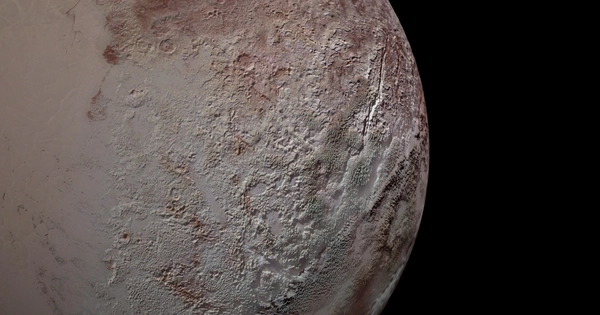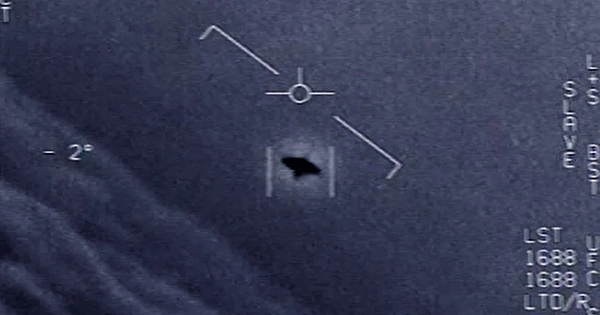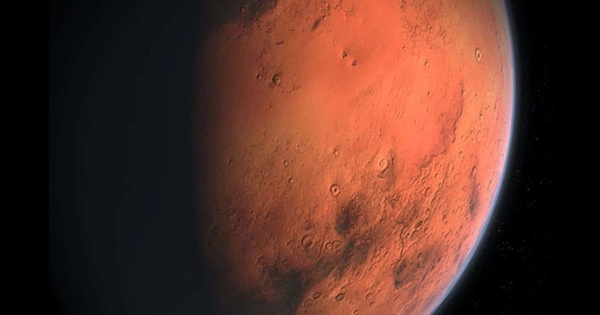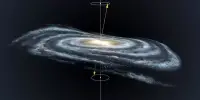The New Horizons space probe discovered spectacular snowcapped mountains on Pluto in 2015, which are strikingly similar to mountains on Earth. Such a landscape had never been seen before in the Solar System. However, while atmospheric temperatures on our planet decrease with altitude, they heat up with altitude on Pluto due to solar radiation. So, where does this ice come from?
Scientists have discovered an intriguing new insight into the formation of Pluto’s landscape. A team of international researchers, led by Dr Adrien Morison of the University of Exeter, has demonstrated how vast ice forms have formed in one of the planet’s largest craters, Sputnik Planita.
Perhaps the most striking feature on Pluto’s surface, Sputnik Planitia is an impact crater, consisting of a bright plain, slightly larger than France, and filled with nitrogen ice. For the new study, researchers have used sophisticated modelling techniques to show that these ice forms, polygonal in shape, are formed by the sublimation of ice — a phenomenon where the solid ice is able to turn into gas without going through a liquid state.
We know that the surface of the ice exhibits remarkable polygonal features – formed by thermal convection in the nitrogen ice, constantly organizing and renewing the surface of the ice. However, there remained questions behind just how this process could occur.
Dr. Morison
The research team show this sublimation of the nitrogen ice powers convection in the ice layer of Sputnik Planitia by cooling down its surface. The research is published in the leading journal Nature.
“When the space probe New Horizon performed the only, to date, fly-by of Pluto in 2015, the collected data was enough to drastically change our understanding of this remote world,” said Dr Morison, a Research Fellow from Exeter’s Physics and Astronomy department. It demonstrated, in particular, that Pluto is still geologically active despite its distance from the Sun and limited internal energy sources. This includes Sputnik Planitia, where the surface conditions allow the atmosphere’s gaseous nitrogen to coexist with solid nitrogen.
“We know that the surface of the ice exhibits remarkable polygonal features – formed by thermal convection in the nitrogen ice, constantly organizing and renewing the surface of the ice. However, there remained questions behind just how this process could occur.”
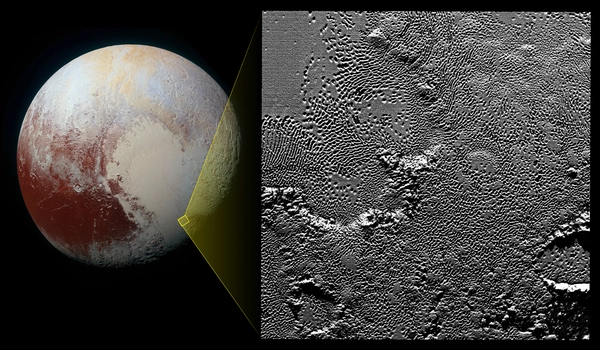
Pluto once had a subsurface ocean, and evidence of recently active cryovolcanoes suggests it still exists, with Pluto’s network of ice volcanoes possibly feeding off a single liquid source. According to Linda Geddes for the Guardian, the discovery also implies that there is more heat in Pluto’s interior than previously thought, which is likely caused by the decay of radioactive elements in the dwarf planet’s interior. The possibility of a liquid ocean beneath Pluto’s surface raises the possibility of life on the dwarf planet from nil to slim.
In the new study, the research team conducted a series of numerical simulations that showed the cooling from sublimation is able to power convection in a way that is consistent with numerous data coming from New Horizons — including the size of polygons, amplitude of topography and surface velocities.
It is also consistent with the timescale predicted by climate models for Sputnik Planitia sublimation, which begins around 1 to 2 million years ago. It demonstrated that the dynamics of this nitrogen ice layer are similar to those found in Earth’s oceans and are influenced by climate.
Pluto has a thin, tenuous atmosphere that expands as it gets closer to the Sun and contracts as it gets farther away, much like a comet. The main constituent is molecular nitrogen, but methane and carbon monoxide molecules have also been detected.
Such climate-powered solid layer dynamics could occur on the surface of other planetary bodies, such as Triton (one of Neptune’s moons) or Eris and Makemake (from Kuiper’s Belt).
